Ruby Butler: Time to Rethink RubyGems and Bundler
The Realization
Earlier this year — long before the recent Ruby Central fiasco — I started exploring ideas for the next major version (4.x) of RubyGems and Bundler. That’s when it struck me: somewhere along the way, these projects stopped moving forward. Formats like gemspec, Gemfile, and others haven’t evolved in years, and any attempt to change them usually ends in early rejection.
Over time, RubyGems and Bundler became finely tuned for large company deployments and super-stable environments, but that same stability now limits innovation. The excitement of experimenting, hacking, and building new ideas into Ruby’s tooling slowly faded — at least for me.
The Inspiration
While working on some Python projects recently (mostly Airflow-related), I was deeply inspired by uv — its simplicity blew me away. The run command just worked: no confusing errors, no excuses, no manual setup. It installed everything needed — even Python itself — and executed the program at lightning speed.
As a partial web developer, I’ve also long admired how JavaScript projects use the scripts section in package.json. It’s such a clean way to define project-specific commands — no more copy-pasting long, platform-specific commands from READMEs. In Ruby, I often had to scan CI setups to figure out how to run specs (rake, rspec, or another runner), how to run linters, and so on.
The Acceptance
In Ruby, there’s no single entry point for this kind of extra project metadata or developer scripts. Yes, there’s Rake, but it suffers from the classic chicken-and-egg problem — it often loads the entire app environment just to run a simple command. It can be configured otherwise, but that’s rare in practice. Meanwhile, Gemfile is for dependencies, gemspecs aren’t meant for apps, and trying to push features like “install by default” for bundle exec inside Bundler felt nearly impossible (even though an environment variable for it already exists).
At the same time, I’ve always admired how well RubyGems and Bundler work internally — they’re elegant, consistent, and incredibly stable. But I realized I wanted to recompose them: use the same powerful internals in a different way, with a simpler and more modern interface. Looking deeper inside, I had to accept a truth — changing them directly would be nearly impossible. However, building a custom “frontend” wrapper that instructs these tools to behave differently was possible.
That’s how the idea for Ruby Butler was born. From that point, it began taking shape as a simple command-line tool — the rb command in your terminal, ready to serve.
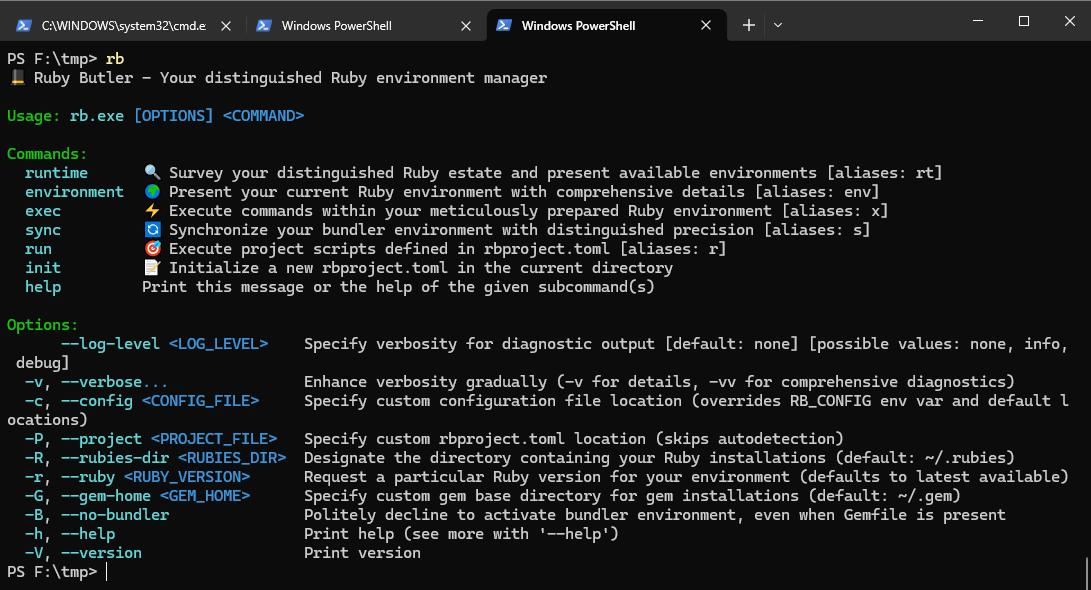
The Discovery
Ruby Butler started as a simple Bash script, just mangling a few environment variables needed by Ruby, RubyGems, and Bundler. To control the Ruby environment, all you really need is to put the desired Ruby’s bin directory in your PATH and set two variables — GEM_HOME (where to install gems) and GEM_PATH (GEM_HOME plus Ruby’s default gems). That’s it. That’s the whole “rocket science” behind tools like chruby.
Every Ruby environment tool I’d used — chruby, rbenv, and others — was tied tightly to the shell (mostly Bash and friends). That worked, but it often caused friction. You had to ensure your current shell instance matched the Ruby setup you wanted. Tools like chruby-auto helped a bit, but switching Rubies in the same shell session remained tricky. And on systems without a preinstalled Ruby — my preferred setup today — simply running ruby failed until everything was manually configured. I wanted something truly unified — cross-shell, cross-platform, and automatic. I wanted something that would automatically prepare the exact Ruby environment I’m looking for.
That’s where today’s Ruby Butler architecture was born.
The Architecture
Ruby Butler builds on a simple idea: Rubies are already on your system — you just need the right one at the right time.
By default, it scans ~/.rubies (for compatibility with tools like ruby-install) and detects which versions are available. From there, it can automatically select the best Ruby for the current context — or let you decide manually.
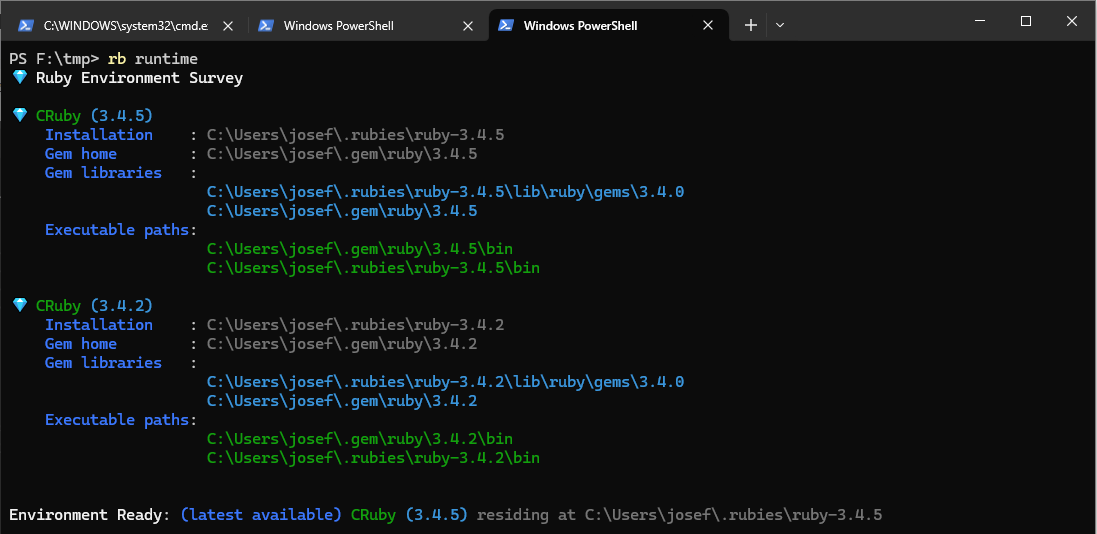
But the real goal isn’t just choosing a Ruby version. It’s to prepare a clean, ephemeral environment where Ruby programs can run without leaving traces behind. This environment exists only for the duration of the command — no shell pollution, no manual resets. For quick scripts, the latest Ruby works just fine. If a .ruby-version file or a Gemfile with a ruby section is detected, Butler automatically switches to the matching version. And when you need something specific, you can ask explicitly: rb -r 3.4.2.
Everything runs through the exec command — rb exec, or simply rb x. It behaves as expected, with no setup needed unless the environment can’t be inferred. Ruby Butler is also smart enough to use RubyGems binstubs, eliminating the need for bundle exec or bin/ prefixes. Working in a Rails app? Just run rb x rails s. I’ve been experimenting with a shorter alias, rbx, but haven’t fully settled on it yet.

Butler is also clever enough to compose your Bundler environment automatically. It runs bundle check and, if necessary, bundle install — all within its own isolated .rb folder. In practice, this means you can literally clone a project and run rb x rspec, and everything just works (unless, of course, other setup like a database is required).
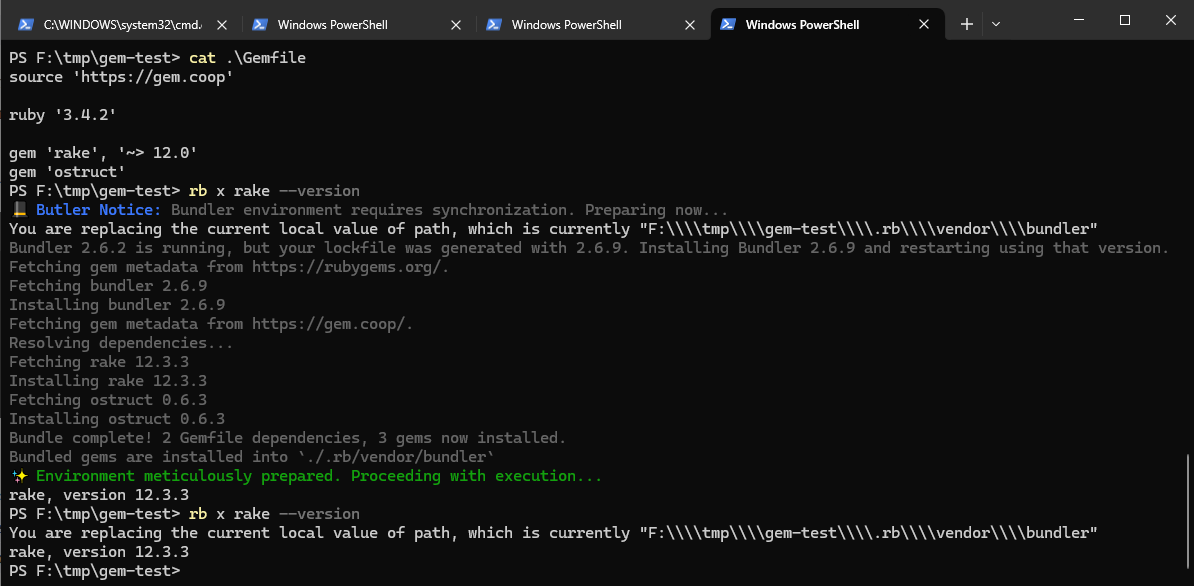
The Innovation
And finally, Ruby Butler lets you describe how your project should behave to elevate the overall developer experience. You don’t even have to start from scratch — just run rb init, and Butler will generate a basic rbproject.toml file for you. You can also use alternative names like gem.toml, or the KDL variants rbproject.kdl and gem.kdl if you prefer a more structured format.

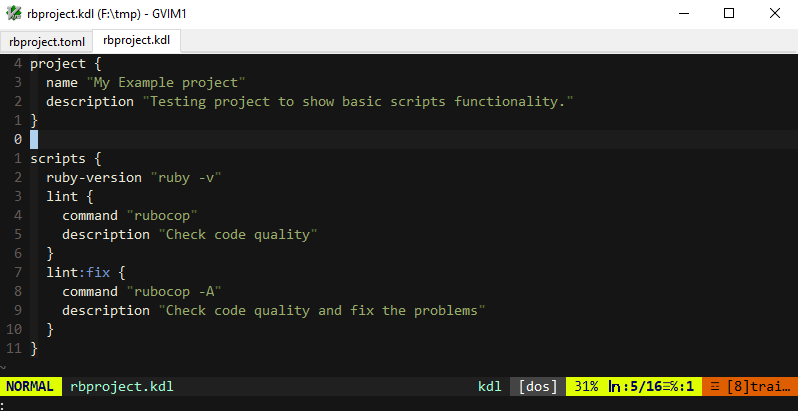
This marks the beginning of a new, unified project format for Ruby — something that could, in time, replace both gemspec and Gemfile. For now, it simply decorates your project with a name and a set of scripts — commands (optionally with descriptions) that appear as a clean, discoverable list in the CLI via rb run.
And the best part? The Butler prepares the full environment for you automatically, just as it does with the exec command. When you run rb run test or rb run lint, Butler silently sets up the correct Ruby, Bundler, and gem context behind the scenes, ensuring everything “just works.” No shell hacks, no manual setup, no guesswork — it’s all part of Butler’s service.
This format is still being explored in collaboration with other modern tools (like rv) and may grow into a new long-term standard. The goal is simple but ambitious: to make Ruby development feel effortless, consistent, and joyful again.
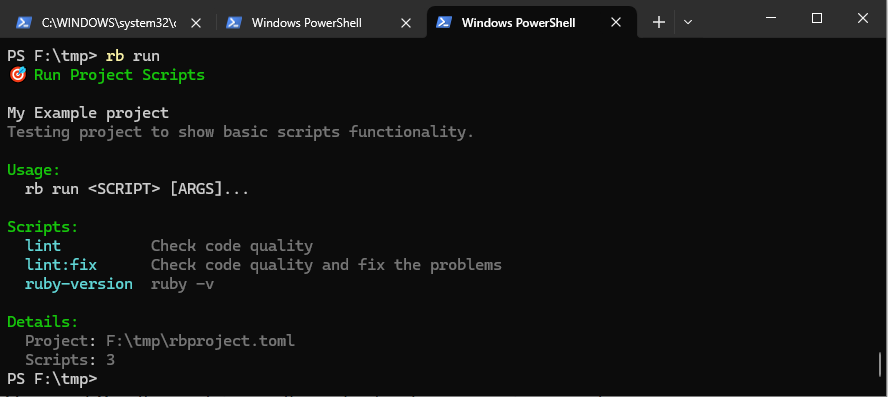
The Future
Feel free to try out Ruby Butler (github.com/RubyElders/ruby-butler) — maybe it will serve you well too. Personally, I’ve been using it as my main Ruby development tool for the past couple of months across two systems — Windows and Linux — with great success. It already runs an extensive integration test suite on both platforms: Pester for PowerShell on Windows and Shellspec for Bash on Linux.
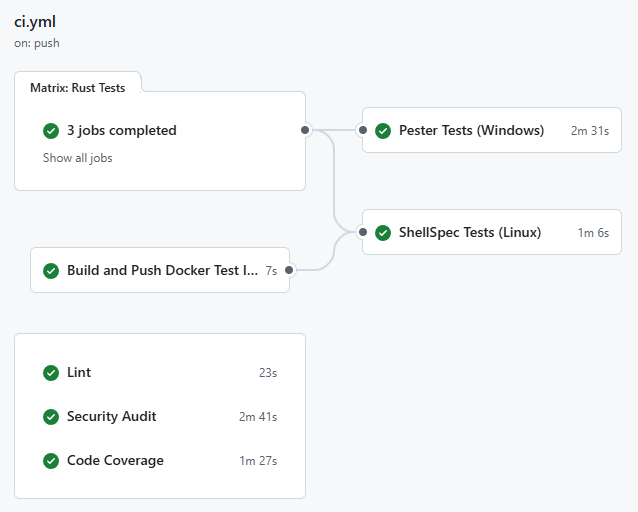
It doesn’t yet solve every problem I’ve encountered over the years with RubyGems and Bundler, but in my opinion, it’s already a huge improvement in everyday developer experience. I’d love to hear your ideas and feedback — on GitHub or anywhere else the Ruby conversation lives.
Since Ruby Butler operates in complete isolation, it won’t interfere with your existing setup or tools. Just make sure to add the .rb folder and rbproject.toml (or any of its variants) to your global .gitignore for now.
And one last note: please don’t use it in production yet. Ruby Butler is still evolving rapidly, and both its API and CLI flags are subject to change. But if you enjoy experimenting and helping Ruby move forward again — that’s exactly the kind of energy Butler was made to serve.
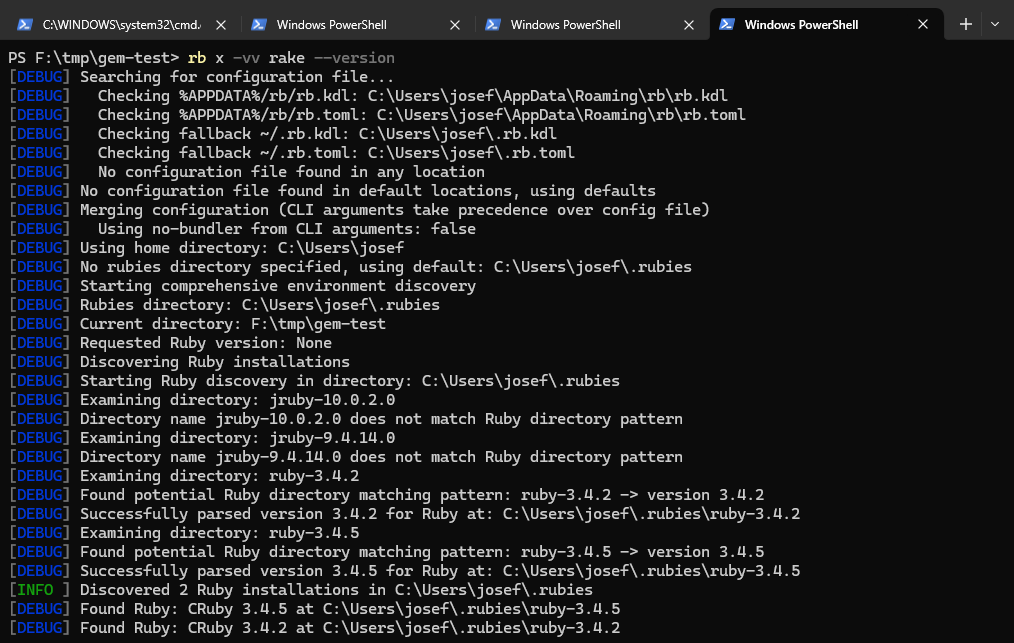
And have I mentioned it’s implemented in Rust? Curious why? I’ll explain that story — and what it enables — in one of the next posts.
And as for whether I’m still happy reusing Bundler and RubyGems after recent events… let’s just say that deserves its own story — coming soon. Time will tell how those tools evolve from here, and I’ll be watching closely.
The Epilogue
During Ruby Butler’s early development, I shared early ideas and prototypes with several friends and respected members of the Ruby ecosystem — even before it was public on GitHub. To be transparent, I was also looking for potential funding or interest to see whether this kind of work could grow into something more official. I reached out to Ruby Central, offering them the opportunity to develop Ruby Butler under their umbrella as an experimental incubator — a safe space to test and validate new ideas that could later be ported or integrated into RubyGems and Bundler once proven useful.
The response was polite but simple: there’s no interest or funding for this kind of development.
More recently, I’ve also submitted a grant proposal to the Ruby Association — also rejected.